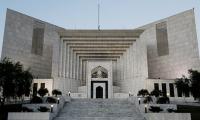ISLAMABAD: The voter database with total registered voters at 125,963,598 shows a slight decrease in the overall percentage of registered female voters, adding to the gender gap. The electoral rolls as of May 31 project 68,048,816 males (54.02%) and 57,914,782 females (45.98%). To the contrary, according to the electoral rolls released previously on March 28, 2023, the total number of registered male voters stood at 67,893,875 (54%) and female voters at 57,732,575 (46%). Hence, the gender gap has increased. As per the latest electoral rolls, Punjab continues to lead with a total of 71,606,379 registered voters and of these, 38,410,248 are male (53.64%) and 33,196,131 (46.36%) female voters. The Punjab province is followed by Sindh with an overall number of voters at 26,488,841, consisting of 14,367,521 (54.24%) males and females accounting for 12,121,320 (45.76%).
Khyber Pakhtunkhwa comes third among the provinces with a total voter database of 21,582,556 and among these, the number of male voters stands at 11,777,377 (54.57%) and female voters at 9,805,179 (45.43%). Balochistan, the largest province in terms of its area, remains the smallest province with a total number of 5,260,247 voters, and of these, 2,955,117 (56.18%) are males and 2,305,130 (43.82%) females. The Islamabad Capital Territory (ICT) consists of 1,025,575 registered voters and among these, 538,553 (52.51%) are males and 487,022 (47.49%) are females.
Khawar Manika's counsel continued his arguments on Wednesday in a petition filed by Imran Khan and Bushra Bibi
IHC reserved judgment on the petition against registration of cases against former interior minister Sheikh Rashid on...
Saudi woman who was reportedly kidnapped from Islamabad’s residential Sector F-8 in mysterious circumstances, has...
Pakistan Navy warship rescued 8 Iranian fishermen after their boat caught fire in the open sea
SC dismissed appeal against SHC order that turned down application of partner seeking extension of time to furnish...
Executive board of International Monetary Fund will meet on April 29 to discuss the approval of $1.1 billion funding...







